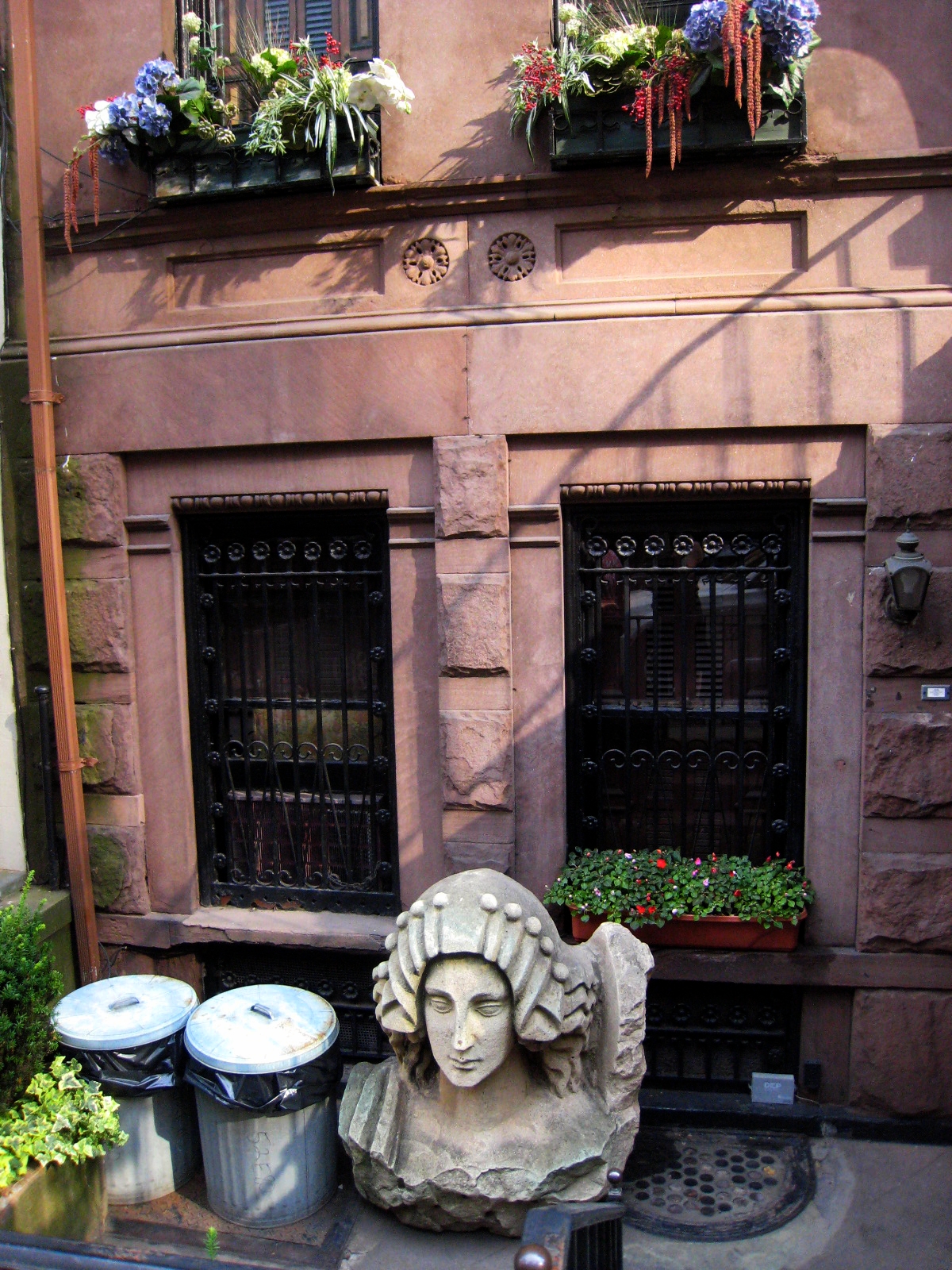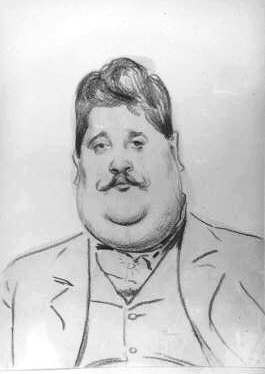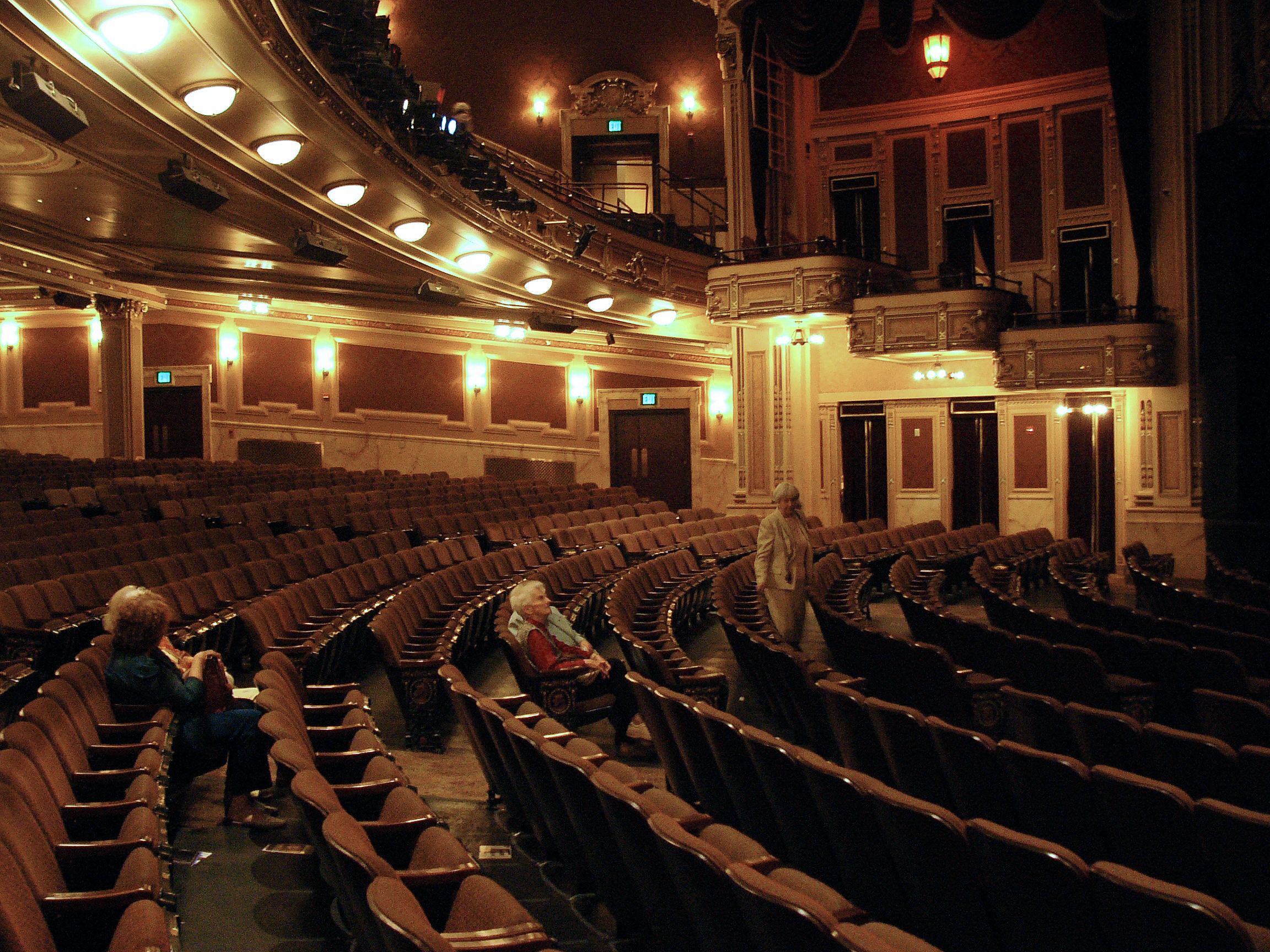|
Thomas W. Lamb
Thomas White Lamb (May 5th, 1870 – February 26th, 1942) was a Scottish-born, American architect. He was one of the foremost designers of theaters and cinemas in the 20th century. Career Born in Dundee, Scotland, United Kingdom, Thomas W. Lamb came to the United States at the age of 12. He studied architecture at Cooper Union in New York and initially worked for the City of New York as an inspector. His architecture firm, Thomas W. Lamb, Inc., was located at 36 West 40th Street in Manhattan, New York. Lamb achieved recognition as one of the leading architects of the boom in movie theater construction of the 1910s and 1920s. Particularly associated with the Fox Theatres, Loew's Theatres and Keith-Albee chains of vaudeville and film theaters, Lamb was instrumental in establishing and developing the design and construction of the large, lavishly decorated theaters, known as "movie palaces", as showcases for the films of the emerging Hollywood studios. As early as 1904 Lamb wa ... [...More Info...] [...Related Items...] OR: [Wikipedia] [Google] [Baidu] |
Dundee, Scotland
Dundee (; sco, Dundee; gd, Dùn Dè or ) is Scotland's fourth-largest city and the 51st-most-populous built-up area in the United Kingdom. The mid-year population estimate for 2016 was , giving Dundee a population density of 2,478/km2 or 6,420/sq mi, the second-highest in Scotland. It lies within the eastern central Lowlands on the north bank of the Firth of Tay, which feeds into the North Sea. Under the name of Dundee City, it forms one of the 32 council areas used for local government in Scotland. Within the boundaries of the historic county of Angus, the city developed into a burgh in the late 12th century and established itself as an important east coast trading port. Rapid expansion was brought on by the Industrial Revolution, particularly in the 19th century when Dundee was the centre of the global jute industry. This, along with its other major industries, gave Dundee its epithet as the city of "jute, jam and journalism". Today, Dundee is promoted as "One Cit ... [...More Info...] [...Related Items...] OR: [Wikipedia] [Google] [Baidu] |
Mark Strand Theatre
The Strand Theatre was an early movie palace located at 1579 Broadway, at the northwest corner of 47th Street and Broadway in Times Square, New York City. Opened in 1914, the theater was later known as the Mark Strand Theatre, the Warner Theatre, and the Cinerama Theatre. It closed as the RKO Warner Twin Theatre, and was demolished in 1987. History The Strand Theatre was built in 1914 as part of the chain of movie theaters owned by the Mark Brothers, Mitchel and Moe. It cost US$1 million () to build and is believed to have been the first lavish movie palace built only to show motion pictures. It was designed by Thomas W. Lamb and served as a model for many other similar theaters built at the time. The ''New York Times'' favorably reviewed the opening of the Strand, helping to establish its importance. To manage the theater, Mitchel Mark personally hired Samuel "Roxy" Rothafel. Rothafel developed his luxurious style of presenting films at the Strand which he later perfected at t ... [...More Info...] [...Related Items...] OR: [Wikipedia] [Google] [Baidu] |
Ziegfeld Theatre (1927)
The Ziegfeld Theatre was a Broadway theatre located at 1341 Sixth Avenue, corner of 54th Street in Manhattan, New York City. It was built in 1927 and, despite public protests, was razed in 1966. History With a seating capacity of 1,638, the Ziegfeld Theatre was named for the famed Broadway impresario Florenz Ziegfeld, Jr., who built it with financial backing from William Randolph Hearst. Designed by Joseph Urban and Thomas W. Lamb, it opened February 2, 1927, with the musical '' Rio Rita''. The theater's second show was also its most famous—Jerome Kern's landmark musical ''Show Boat'', which opened December 27, 1927, and ran for 572 performances. Due to the decline in new Broadway shows during the Great Depression, the theater became the Loew's Ziegfeld in 1933 and operated as a movie theater until showman Billy Rose bought it in 1944. NBC leased the Ziegfeld Theatre for use as a television studio from 1955 to 1963. The '' Perry Como Show'' was broadcast from the theater be ... [...More Info...] [...Related Items...] OR: [Wikipedia] [Google] [Baidu] |
Joseph Urban
Joseph Urban (May 26, 1872 – July 10, 1933) was an Austrian-American architect, illustrator, and scenic designer. Life and career Joseph Urban was born on May 26, 1872, in Vienna. He received his first architectural commission at age 19 when he was selected to design the new wing of the Abdin Palace in Cairo by Tewfik Pasha. He became known around the world for his innovative use of color, his pointillist technique, and his decorative use of line. He designed buildings throughout the world from Esterhazy Castle in Hungary to the Ziegfeld Theatre in New York. Urban studied architecture at the Academy of Fine Arts Vienna under Karl von Hasenauer. In 1890, he and his brother-in-law, Heinrich Lefler, were among the founders of the Hagenbund. Urban's early work with illustrated books was inspired by Lefler and, together, they created what are considered seminal examples of children's book illustration. Urban immigrated to the United States in 1911 to become the art director o ... [...More Info...] [...Related Items...] OR: [Wikipedia] [Google] [Baidu] |
Elgin And Winter Garden Theatres
The Elgin and Winter Garden Theatres are a pair of stacked theatres in Toronto, Ontario, Canada. The Winter Garden Theatre is seven storeys above the Elgin Theatre. They are the last surviving Edwardian stacked theatres in the world. History The pair of theatres were originally built as the flagship of Marcus Loew's theatre chain in 1913. The building was designed by architect Thomas W. Lamb, who also designed the Ed Mirvish Theatre nearby. Both theatres were built to show vaudeville acts and the short silent movies of the time. Each theatre was intended for a different class of patron. The gold-and-marble, domed, 'hard-top' lower theatre (originally called Loew's Yonge Street Theatre) was home to continuous vaudeville and movies. The upper-level Winter Garden is an 'atmospheric' country garden under the stars, painted with murals of plants and garden trellises, with tree trunk columns and lantern lights. The upper theatre was built for the 'Big Time' vaudeville market and had ... [...More Info...] [...Related Items...] OR: [Wikipedia] [Google] [Baidu] |
Ed Mirvish Theatre
The Ed Mirvish Theatre, also currently known by naming rights sponsorship as CAA Ed Mirvish Theatre, is a historic film and play theatre in the downtown core of Toronto, Ontario, Canada. It was initially known as the Pantages Theatre, then became the Imperial Theatre, and Canon Theatre before being renamed in honour of Ed Mirvish, a well-known businessman and theatre impresario. The theatre first opened in 1920 and is located near Yonge–Dundas Square. History Early years The Pantages Theatre opened in 1920 as a combination vaudeville and motion picture house. Designed by the theatre architect Thomas W. Lamb, it was the largest cinema in Canada (originally having 3373 seats) and one of the most elegant.Doherty, Brennan (August 27, 2016)"This week in history: August 28, 1920, Pantages Theatre opens" ''Toronto Star''. Retrieved July 15, 2022. The Pantages was built by the Canadian motion picture distributor Nathan L. Nathanson, founder of Famous Players Canadian Corporation, the ... [...More Info...] [...Related Items...] OR: [Wikipedia] [Google] [Baidu] |
Ohio Theatre (Columbus, Ohio)
The Ohio Theatre is a performing arts center and former movie palace on Capitol Square in Downtown Columbus, Ohio. Known as the "Official Theatre of the State of Ohio", the 1928 building was saved from demolition in 1969 and was later completely restored. The theater was declared a National Historic Landmark in 1977 as one of the nation's finest surviving grand theaters. The Ohio Theatre is owned and operated by the non-profit arts management organization CAPA (The Columbus Association for the Performing Arts), which was originally formed to save the theater in 1969. History Loew's Ohio Located in Downtown Columbus on the site of the old Columbus City Hall, the Ohio Theatre was designed by the noted theater architect Thomas W. Lamb. Of all of the theaters he designed, he noted the Ohio as one of his most successful. He intended to separate patrons from their daily lives by creating a luxurious fantasy atmosphere inside. It was decorated and furnished by New York designer An ... [...More Info...] [...Related Items...] OR: [Wikipedia] [Google] [Baidu] |
Hippodrome Theatre (Baltimore)
The Hippodrome Theatre is a theater in Baltimore, Maryland. History Built in 1914 for impresarios Marion Scott Pearce and Scheck, the 2300-seat theater was the foremost vaudeville house in Baltimore, as well as a movie theater. When the movie palace opened, it was the largest theatre in the United States south of Philadelphia. The Hippodrome was designed by Thomas W. Lamb, one of the foremost theater architects of his time. Lamb gave the theater an unusually strong presence on Eutaw Street through the use of brick and terra cotta on a massive façade. The Hippodrome was renovated in 2004 for use as a performing arts theater, and is part of the France-Merrick Performing Arts Center. The site had previously been occupied by the five story House Hotel, built in 1835 and destroyed by fire on May 25, 1912. The new theater had an original capacity of 3,000 seats and boasted a Moller organ, as well as a house orchestra that survived into the 1950s. The Loew's chain operated the Hippod ... [...More Info...] [...Related Items...] OR: [Wikipedia] [Google] [Baidu] |
Times Square Church
Times Square Church is an interdenominational congregation located at the Mark Hellinger Theatre on 237 West 51st Street in the Theater District of Manhattan in New York City. Times Square Church was founded by Pastor David Wilkerson in 1987 and bought the Mark Hellinger Theatre in 1991. Church history The Times Square Church was founded by David Wilkerson in 1987. At the time, Times Square was known as a center of X-rated films, strip clubs, prostitution, and drug addiction. Wilkerson opened the church in response to what he described as "the physically destitute and spiritually dead people" he saw among the pimps, runaways and crack dealers who populated the area. The Times Square Church briefly held its services at The Town Hall (New York City), Town Hall on 43rd Street in Manhattan and then in the Nederlander Theatre on 41st Street. In 1989 the church leased the former Mark Hellinger Theatre The Mark Hellinger Theatre (formerly the 51st Street Theatre and the Hollywoo ... [...More Info...] [...Related Items...] OR: [Wikipedia] [Google] [Baidu] |
Mark Hellinger Theatre
The Mark Hellinger Theatre (formerly the 51st Street Theatre and the Hollywood Theatre) is a church building at 237 West 51st Street in the Midtown Manhattan neighborhood of New York City, which formerly served as a cinema and a Broadway theater. Opened in 1930, the Hellinger Theatre is named after journalist Mark Hellinger and was developed by Warner Bros. as a movie palace. It was designed by Thomas W. Lamb with a modern facade and a Baroque interior. It has 1,605 seats across two levels and has been a house of worship for the Times Square Church since 1989. Both the exterior and interior of the theater are New York City landmarks. The facade on 51st Street is designed in a modern 1930s style and is constructed with golden and brown bricks. The stage house to the west and the auditorium at the center are designed as one unit, with a cornice above the auditorium. The eastern section, containing the building's current main entrance, includes statues flanking the doors, as ... [...More Info...] [...Related Items...] OR: [Wikipedia] [Google] [Baidu] |
Boston Opera House (1980)
The Boston Opera House, also known as the Citizens Bank Opera House, is a performing arts and esports venue located at 539 Washington St. in Boston, Massachusetts. It was originally built as the B.F. Keith Memorial Theatre, a movie palace in the Keith-Albee chain. The chain became part of RKO when it was established just before the theater opened on October 29, 1928, and it was also known as the RKO Keith's Theater. After operating for more than 50 years as a movie theater, it was rededicated in 1980 as a home for the Opera Company of Boston, which performed there until the opera company closed down in 1990 due to financial problems. The theater was reopened in 2004 after a major restoration, and it currently serves as the home of the Boston Ballet and also hosts touring Broadway shows. History The Boston Opera House was originally designed as the B.F. Keith Memorial Theatre, a lavish movie theater in the Keith-Albee chain. The Keith's Memorial was one of his most elaborate ... [...More Info...] [...Related Items...] OR: [Wikipedia] [Google] [Baidu] |
Capitol Theatre (New York City)
The Capitol Theatre was a movie palace located at 1645 Broadway (Manhattan), Broadway, just north of Times Square in New York City, across from the Winter Garden Theatre. Designed by theater architect Thomas W. Lamb, the Capitol originally had a seating capacity of 5,230 and opened October 24, 1919. After 1924 the flagship theatre of the Loews Theatres chain, the Capitol was known as the premiere site of many Metro-Goldwyn-Mayer (MGM) films. The Capitol was also noted for presenting live musical revues and many jazz and swing bands on its stage. History The Capitol was one of the first of the large lavish movie theaters that dominated the film exhibition business for the next 40 years, built by Messmore Kendall as one of New York’s first cinema palaces, through his realty company, Moredall Realty Company. It opened on October 24, 1919 with the New York premiere of United Artists' first production, ''His Majesty, the American''. The theater was acquired in 1924 by the entertain ... [...More Info...] [...Related Items...] OR: [Wikipedia] [Google] [Baidu] |


_-_cropped.jpg)






